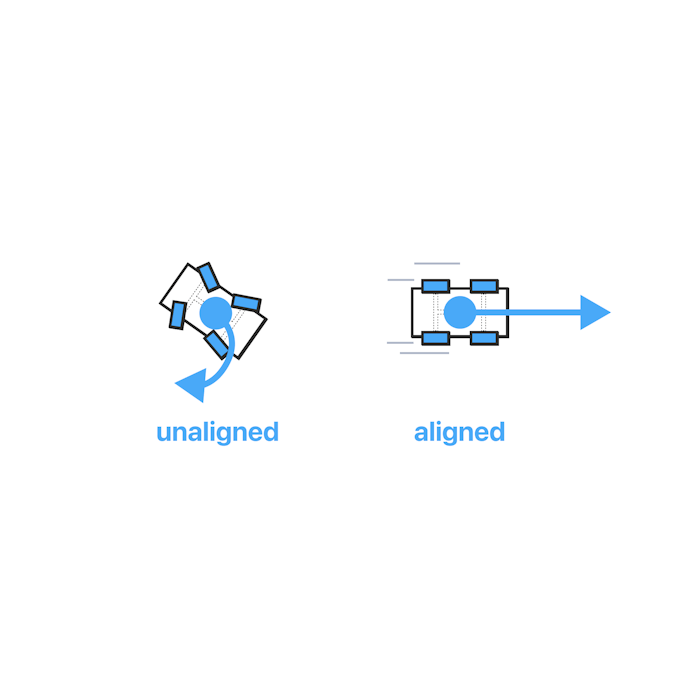Alignment
The antidote to micromanagement and freeing up your time

Alignment is the antidote to micromanagement and the secret to freeing up your time. As an engineering leader, if you can keep everyone steering in the same direction, you can create teams that beat your competition and save your energy by focusing on setting direction rather than trying to steer for them.
“If you could get all the people in an organization rowing in the same direction, you could dominate any industry, in any market, against any competition, at any time.” by unknown, from The Five Dysfunctions of a Team, by Patrick Lencioni.
What is alignment
Alignment is simply everyone heading towards the same goal in sync.
What it looks like
Aligned teams run smoothly, like a car cruising on the road towards a distant town. This car looks ordinary on the outside, but on the inside, it’s not. It's unusual because there are four drivers, each with a steering wheel controlling one of the wheels. Everyone is carefully steering in sync to keep the car travelling towards its destination. When they first started the car, they were much slower. They were slower because they were getting used to steering together. But now they’ve learnt how to work together, the car moves rapidly along the road, the wheels moving in alignment.
Lack of alignment looks like a car going all over the place, moving slowly. If one of the drivers steers in a different direction towards a village they've spotted out of the side window, the car will begin to vibrate as the turned tire bounces in contact with the road and rubber starts to shred from it. The friction generated from the turned wheel causes the car to slow as the velocity is split between two directions. If the other drivers want to steer their wheel in different directions, the car may end up driving around in circles or stopping altogether. If the drivers remain in conflict long enough, they might decide it’s time to give up and get out of the vehicle, especially when they see a steep hill approaching.
How seeing alignment helps us align teams.
Just as misalignment in the car will kill performance, we can use it to notice when teams aren’t aligned. To build high-performing aligned teams, you can:
- To get everyone moving in sync towards a goal > Set compelling goals and visions so team members willingly align
- To keep everyone focused on what’s outside the front window, removing the need to steer for them > Make the destination obvious so the team can always see where they need to go.
- Driver heading towards the village > Coaching individuals to show them why they should go in the right direction to align them.
- Rubber wearing off the tires, bumpy ride - Lack of alignment doesn’t just hurt the team, but it hurts the individual, too - people don’t like pain, so focusing on that pain can help bring them back to alignment
- Drivers leave the car before reaching challenging terrain. > Recognize when the time comes for you to create an exit plan or hire new team members. Sometimes, no amount of coaching can help, so you should address the problems before reaching the critical crunch point when your team members decide to leave
Closing thoughts
Alignment is valuable for high-performing teams, and frictionless communication is the key to making it happen. Sometimes, team members must quickly take the initiative and change direction. Maybe the one who wanted to go to the village knew that a roadblock would stop them from getting to the town quickly. The key is good communication so everyone can quickly align and steer in the same direction.
Get more concepts to your inbox, sign up to the newsletter below